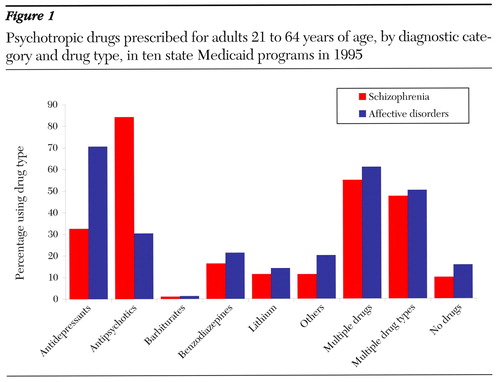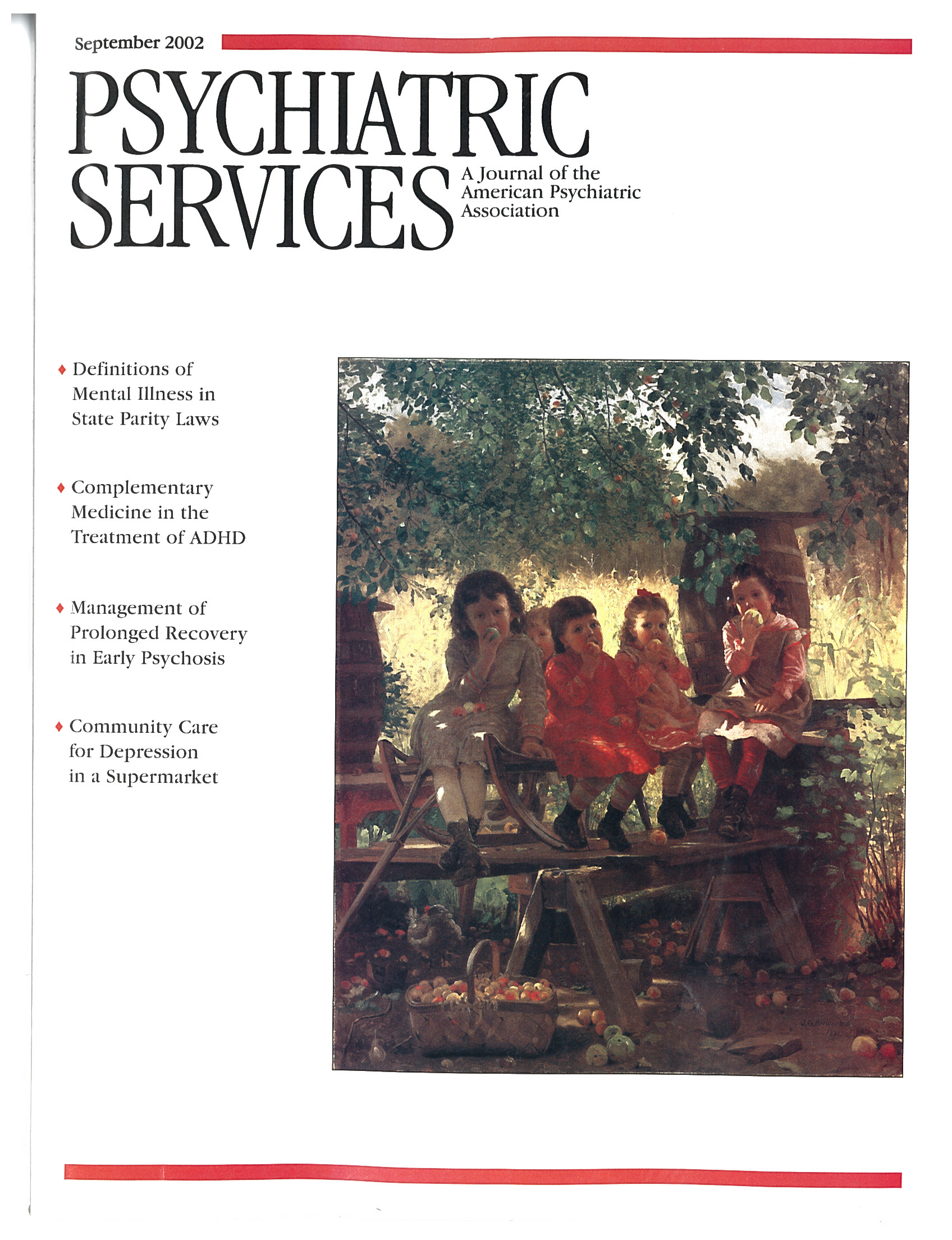Datapoints: Use of Psychotropic Drugs by Mentally Ill Medicaid Beneficiaries
Psychotropic drugs are often an essential component in the treatment of individuals with mental disorders. Yet few studies have provided data on the proportions of individuals who use specific medications for certain disorders. We present data on the use of psychotropic drugs by persons diagnosed with schizophrenia or an affective disorder and enrolled in Medicaid programs in 1995 in one of ten states—Alabama, Arkansas, Delaware, Georgia, Kansas, Kentucky, New Hampshire, New Jersey, Vermont, and Wyoming.
We used data from the State Medicaid Research Files of the Center for Medicare and Medicaid Services (formerly the Health Care Financing Administration). The ten states were selected on the basis of criteria related to geographic diversity, completeness and quality of data, and limited penetration of Medicaid managed care in 1995. The analysis included only adults aged 21 to 64 and excluded persons who were dually enrolled in Medicaid and Medicare. Individuals were assigned to diagnostic categories on the basis of their most frequent diagnosis over the year.
Across the ten states, a total of 185,791 Medicaid enrollees used some type of mental health or substance use treatment service. Of these, 14 percent (26,256) were classified as having schizophrenia or schizoaffective disorder and 17 percent (32,192) as having an affective disorder—mania, major depression, or bipolar disorder (additional data available from the authors).
Figure 1 summarizes the use of psychotropic drugs by drug type for individuals diagnosed with either schizophrenia or an affective disorder. Not surprisingly, antipsychotics were used by 84 percent of those with schizophrenia, while 70 percent of those with an affective disorder used an antidepressant. Antidepressants were the second most commonly used drug type among those with schizophrenia and antipsychotics the second most commonly used among those with an affective disorder. In both diagnostic groups the use of more than one psychotropic drug was the rule rather than the exception, and thus percentages for use of each drug type sum to more than 100.
About half of the sample received prescriptions for more than one type of drug. However, the data we analyzed can tell us nothing about the appropriateness, quality, or outcomes of treatment. Future research could productively examine prescribing patterns and use of psychotropic drugs by individuals with specific mental disorders and how such use is related to the desired outcomes.
Dr. Hennessy is with the office of the assistant secretary for planning and evaluation of the U.S. Department of Health and Human Services, 200 Independence Avenue, S.W., Room 442E, Washington, D.C. 20201 (e-mail, [email protected]). Dr. Green-Hennessy is assistant professor of psychology at Loyola College in Baltimore. Dr. Buck is with the Center for Mental Health Services in Rockville, Maryland. Ms. Miller is with the MEDSTAT Group in Santa Barbara. Harold A. Pincus, M.D., and Terri L. Tanielian, M.A., are editors of this column.

Figure 1. Psychotropic drugs prescribed for adults 21 to 64 years of age, by diagnostic category and drug type, in ten state Medicaid programs in 1995



